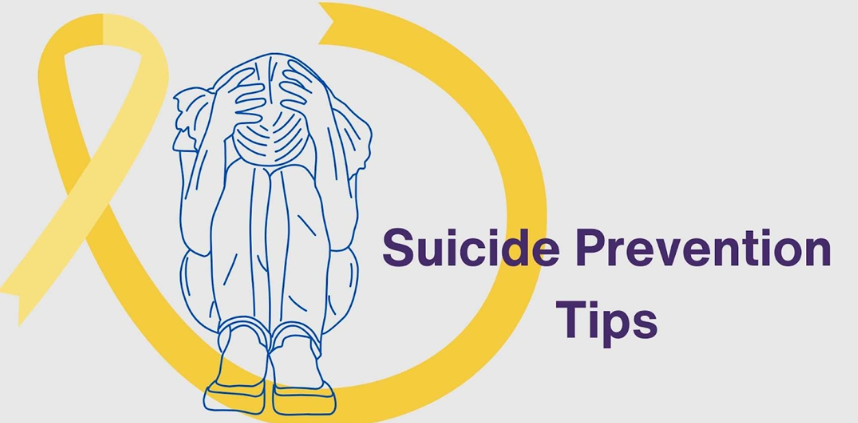Teaching Mental Well-Being to Reduce Suicides (GS Paper 4, Ethics)

Context:
- A recent article in The Lancet has highlighted the critical issue of suicide, prompting psychiatrists to advocate for preventive measures.
- Despite the pressing need, there is concern over the lack of interest from both state and central governments in addressing this problem comprehensively.
Strategy to Curb Suicides
The National Suicide Prevention Strategy (NSPS), launched in November 2022, outlines several key measures to reduce suicides:
- Establish Surveillance Mechanisms: The goal is to develop effective surveillance mechanisms for suicide within three years. This involves creating systems to monitor and analyze suicide trends and identify at-risk individuals early.
- Provide Suicide Prevention Services: Within five years, psychiatric outpatient departments in all districts should offer suicide prevention services through the District Mental Health Programmes. These services include counseling, crisis intervention, and support for those at risk.
- Integrate Mental Well-Being Curriculum: Over the next eight years, a mental well-being curriculum should be integrated into all educational institutions. This curriculum aims to educate students about mental health, emotional resilience, and coping strategies.
- Develop Media Guidelines: Responsible media reporting of suicides is crucial. Guidelines should be developed to ensure that the media covers suicide-related stories sensitively and avoids sensationalism, which can lead to copycat incidents.
- Restrict Means of Suicide: Measures should be implemented to restrict access to common means of suicide, such as pesticides, medications, and firearms. This can significantly reduce the incidence of impulsive suicide attempts.
Suicide Statistics
- Annual Death Toll: Over 1 lakh lives are lost to suicide annually in India, making it the top killer in the 15-29 age group. This staggering figure underscores the urgent need for effective prevention strategies.
- Suicide Rate Increase: From 2019 to 2022, the suicide rate increased from 10.2 to 11.3 per 100,000. This upward trend highlights the growing mental health crisis and the need for immediate intervention.
National Suicide Prevention Strategy (NSPS)
The NSPS proposes several strategic measures:
- State and District-Specific Strategies: Each state and district should develop tailored strategies to address the unique factors contributing to suicides in their regions. Localized approaches ensure that interventions are relevant and effective.
- Task Force Involvement: The health, education, and agriculture ministries in each state should form a task force dedicated to suicide prevention. The health department should take the lead, but other departments such as fertilizers, chemicals, and information and broadcasting should also participate to address the multifaceted nature of the problem.
- Promoting Emotional Well-Being: The education department should actively promote emotional well-being in schools. This includes training teachers to recognize signs of mental distress and incorporating mental health education into the curriculum.
Challenges and Lack of Political Will
- Lack of Political Will: Dr. Soumitra Pathare, Director of the Centre for Mental Health Law and Policy, emphasizes the need for political commitment to address suicide prevention effectively. Without strong political support, many initiatives may falter.
- Fatalistic Attitude: There is a pervasive sense of fatalism surrounding suicide prevention, with many believing that suicides cannot be significantly reduced. However, even a 20% reduction in suicides could save 40,000 lives annually, demonstrating the potential impact of effective interventions.
- Media’s Role: The media needs to educate itself on responsible suicide reporting. Sensationalist coverage can lead to copycat suicides, while responsible reporting can raise awareness and encourage help-seeking behavior.
Current Approach and the Role of Education
- Current Approach: The present strategy is piecemeal and lacks district-wise consistency. A more coordinated and comprehensive approach is needed to ensure that all regions are adequately covered.
- National Education Policy (NEP): The NEP includes valuable components like vocational guidance, multiple exits, a grade system, and course flexibility. However, these provisions remain largely unimplemented. Proper implementation of the NEP can significantly enhance students' mental well-being and reduce stress-related suicides.
- Integration with NSPS: Implementing both NEP and NSPS could significantly reduce suicide rates. The education system plays a critical role in shaping young minds and fostering emotional resilience.
Way Forward
To prevent suicides, timely and supportive actions are crucial:
- Skill Development: Citizens must learn to identify suicidal thoughts, ask about them openly, talk without fear, and refer individuals to caregivers. Training programs and public awareness campaigns can equip people with these essential skills.
- Care and Support: Providing timely suicide prevention counseling and creating safety plans can save lives. Mental health professionals should be available in all districts to offer support and intervention.
- Consistent Implementation: District-wise programs should ensure consistent and effective results. Each district should have a tailored action plan, regular monitoring, and evaluation to track progress and make necessary adjustments.
- Policy Integration: Tying together NEP and NSPS, and by implementing the strategies consistently, can reduce suicide rates. Policies should be harmonized to ensure a holistic approach to mental well-being.
- Community Engagement: Engaging communities in suicide prevention efforts is essential. Local leaders, community organizations, and volunteers can play a crucial role in spreading awareness, providing support, and creating a supportive environment.
Conclusion
- By acknowledging the problem, fostering political will, implementing comprehensive strategies, and involving the community, we can make significant strides in reducing suicides and promoting mental well-being.


